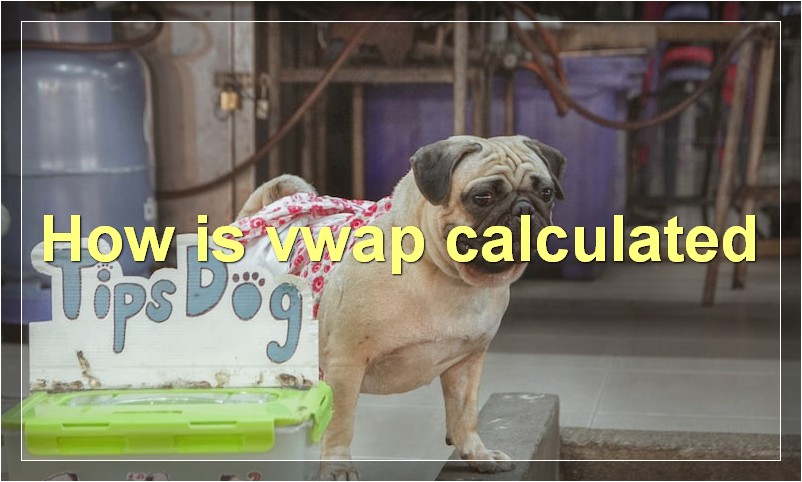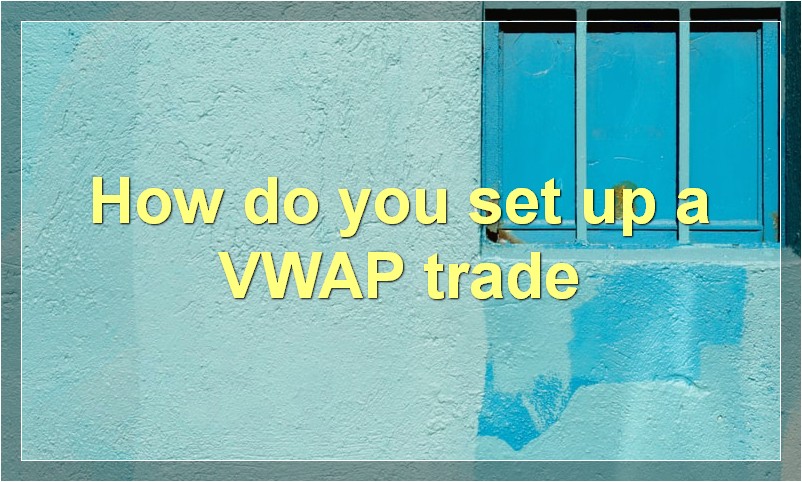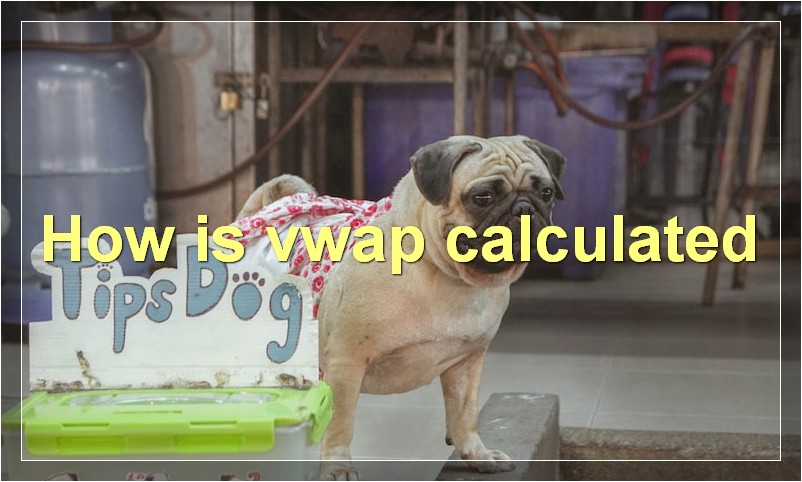If you’re a day trader, then you know the importance of finding the right stock. But what if there was a way to trade smarter? VWAP is an indicator that can help you do just that.
What is the VWAP indicator
The VWAP indicator is a technical analysis tool that is used to measure the average price of a security over a given period of time. The VWAP stands for volume-weighted average price, and is calculated by taking the sum of all traded prices multiplied by the number of shares traded at each price, and then dividing by the total number of shares traded.
The VWAP indicator can be used to help identify trends and support and resistance levels, as well as to measure the relative strength of a security. It is also a popular tool among day traders and momentum investors.
When the VWAP is rising, it indicates that the security is being bought at increasingly higher prices, and vice versa when the VWAP is falling. A rising VWAP can be used as a buy signal, while a falling VWAP can be used as a sell signal.
The VWAP indicator is just one of many technical indicators that can be used to trade the markets, but it can be a helpful tool for those who know how to use it.
How is VWAP calculated

The volume weighted average price (VWAP) is a measure of the average price traded for a security or commodity over the course of a trading day. The VWAP is calculated by adding up all of the prices at which a security or commodity traded during the day, and dividing by the total number of shares or units traded.
The VWAP is a popular tool among traders, because it can be used to help you determine whether you’re getting a good price for your shares. If the VWAP is lower than the current market price, it may be a good time to buy. If the VWAP is higher than the current market price, it may be a good time to sell.
You can also use the VWAP to help you set trailing stop-loss orders. A trailing stop-loss order is an order to sell a security if it falls below a certain price. For example, let’s say you bought 100 shares of ABC Company stock at $10 per share. You could place a trailing stop-loss order with a trigger price of $9.50. This means that if the stock falls to $9.50 or below, your order will be triggered and your shares will be sold at the market price.
What is the difference between VWAP and other volume-based indicators
Volume-based indicators are technical analysis tools that use volume data to predict future price movements. The volume-weighted average price (VWAP) is a volume-based indicator that uses the average price of a security over a specified period of time, weighted by the volume traded during that period.
VWAP is a popular indicator among traders and is often used as a benchmark against which other volume-based indicators are compared. While VWAP only considers volume and price data, other indicators may also incorporate other factors, such as open interest or momentum.
The main difference between VWAP and other volume-based indicators is that VWAP gives more weight to periods of high volume trading, while other indicators may give equal weight to all periods. This makes VWAP a more accurate measure of the true average price of a security.
How can VWAP be used in trading
Volume Weighted Average Price (VWAP) is an important technical indicator that is used by traders in order to assess the current market value of a stock. By taking into account the volume of shares traded, as well as the price of each trade, VWAP provides a more accurate picture of the true value of a stock than simply looking at the average price.
In addition to providing insight into the current market value of a stock, VWAP can also be used as a trading tool. By tracking the VWAP of a particular stock, traders can better assess when to buy or sell in order to take advantage of short-term price discrepancies. Additionally, some traders use VWAP as a stop-loss level, meaning they will sell their position if the stock falls below VWAP.
What are some common VWAP strategies
Some common VWAP strategies include using VWAP as a benchmark, trading with the trend, and using VWAP as a target.
VWAP can be used as a benchmark to measure the performance of a security. For instance, if a security is trading below its VWAP, it may be considered undervalued, and if it is trading above its VWAP, it may be considered overvalued.
VWAP can also be used as a trend indicator. If the VWAP is rising, it may indicate that the security is in an uptrend, and if the VWAP is falling, it may indicate that the security is in a downtrend.
Finally, VWAP can be used as a target. For example, a trader may buy a security when it is trading below its VWAP and sell it when it reaches its VWAP.
How do you set up a VWAP trade

If you’re interested in trading with volume weighted average price (VWAP), there are a few things you need to know. First, VWAP is calculated using the formula:
VWAP = (C*V)/(V+M)
where:
C = the security’s closing price
V = the dollar volume traded for the day
M = the number of shares outstanding
To set up a VWAP trade, you’ll need to use a broker that offers this type of trading. For example, Interactive Brokers offers VWAP trading on select stocks and ETFs. Once you’ve selected your broker and found a security that you want to trade, you’ll need to place a trade order. For example, if you want to buy 100 shares of XYZ stock with VWAP, you would place a buy order and specify “VWAP” as the order type.
Not all brokers offer VWAP trading, so be sure to check before placing your trade. And keep in mind that because VWAP is a volume-weighted average, it’s best used on securities with high liquidity.
What are the risks and rewards of trading with VWAP
Volatility is one of the most important factors to consider when trading with VWAP. While the strategy can often lead to positive results, there is always the potential for losses, especially during periods of high volatility. It is important to be aware of these risks and rewards before entering into any trades.
The VWAP strategy can be a great tool for traders looking to take advantage of market trends. However, it is important to remember that this strategy does not guarantee success and there is always the potential for losses. Trading with VWAP can be a great way to improve your chances of success, but it is important to be aware of the risks involved.
What are some common mistakes traders make with VWAP
1. One common mistake that traders make with VWAP is trading too close to the VWAP line. This can often result in getting caught in a VWAP “wiggle” and taking a loss.
2. Another common mistake is using VWAP as a rigid trading rule, instead of using it as a guideline. For example, if a stock is trading above VWAP, some traders will automatically sell, regardless of the other factors involved in the trade.
3. Finally, many traders fail to take into account the time factor when using VWAP. The VWAP calculation is based on the volume traded over a specific period of time, usually one day. However, if a trader is looking at a shorter time frame, such as an hourly chart, the VWAP may not be as accurate.
How can you avoid making mistakes when trading with VWAP
When it comes to trading with VWAP, there are a few things you can do to avoid making mistakes. First, make sure you understand what VWAP is and how it works. Second, be aware of the factors that can affect VWAP. Lastly, use VWAP in conjunction with other technical indicators to get a better picture of the market.
What are some advanced VWAP strategies
Some advanced VWAP strategies include using a longer time frame to construct the VWAP, using different types of orders to trade at the VWAP, and using the VWAP as a trailing stop. Other strategies include using the VWAP to trade news events, using it as a support or resistance level, and using it as a breakout level.

